High-precision calibration of astronomical high-resolution spectroscopy instruments is one of the key techniques that enable the detection of extra-solar planets via the radial velocity method. Research at the field frontiers is pushing towards the 10 cm/s detection limit that would allow the detection of terrestrial exoplanets. Such high precision can hardly be satisfied by traditional calibration techniques. To achieve such an ambitious goal, breakthroughs in many aspects have to be made, especially the development of new calibration sources and calibration methods.
Fabry-Perot etalon (FPE) can be used for high-precision wavelength calibration with fine stability control and is the key component of a new type of calibration source that has attracted much attention. Its spectrum consists of a dense, regularly spaced sequence of transmission peaks, with a broad wavelength coverage, and is expected to achieve a calibration precision better than 10 cm/s. However, since the absolute transmission peak wavelength of FPE is unknown, it is impossible to determine the spatial distribution (i.e., wavelength solution) of the wavelength of the spectrograph by using FPE alone, which hinders the practical application of FPE calibration.
In response to this problem, the team of Prof. Xiao Dong from the Nanjing Institute of Astronomical Optics and Technology (NIAOT), Chinese Academy of Sciences proposed a method for solving the wavelength solution of FPE. By combining the thorium-argon lamp (a traditional wavelength calibration source) with FPE, the thorium-argon lamp is used to provide wavelength information for the FPE. Then, the errors in the wavelength information of the thorium-argon lamp are corrected by the smooth relationship between the penetration depth and the wavelength of the FPE dielectric reflective film. In this way, the wavelength of the FPE transmission peaks is accurately obtained without the aid of additional characterization equipment such as Fourier transform spectrometers. Using the wavelength of FPE transmission peaks, a high-precision wavelength solution of the spectrometer can be obtained. The research team used the self-developed solid-cavity FPE to field-test the method on the Fiber-fed High-Resolution Spectrograph (HRS) of the Xinglong 2.16-m Telescope. The results show that the root-mean-square error of the FPE wavelength solution is only 0.053 pm, which is significantly better than the typical root-mean-square error of 0.290 pm for the thorium-argon lamp wavelength solution.
This work has been published in the first issue of "Acta Optica Sinica" in 2022, and won the best papers award of this issue. This research was supported by the National Natural Science Foundation of China (11773044, 11803060, 11873071, 11903060, U2031211) and the special funds for the renewal of astronomical observatories and the operation of major instruments and equipment of the Chinese Academy of Sciences.
Link to the paper:
https://www.opticsjournal.net/Articles/OJe22df1faa1ea811f/Abstract 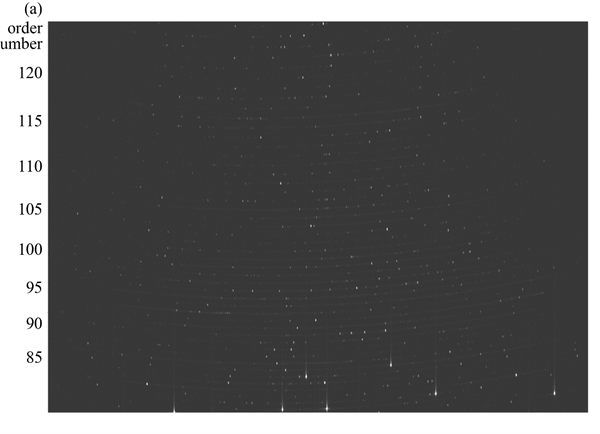
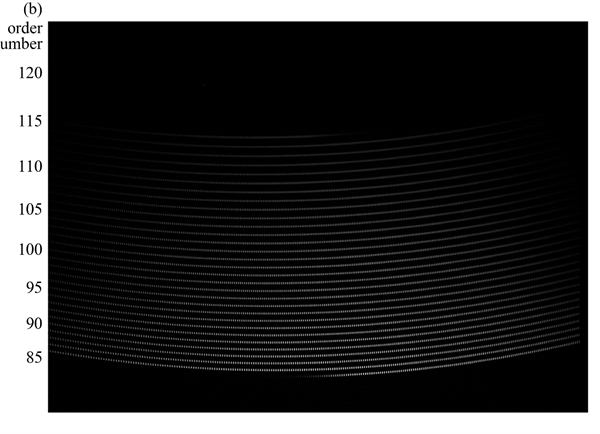
Figure 1 two dimension spectral measurement map of high-resolution Fiber Spectrometer (HRS) of 2.16m astronomical telescope. The vertical axis marks the diffraction order of the HRS. (a) Thorium-argon lamp; (b) FPE 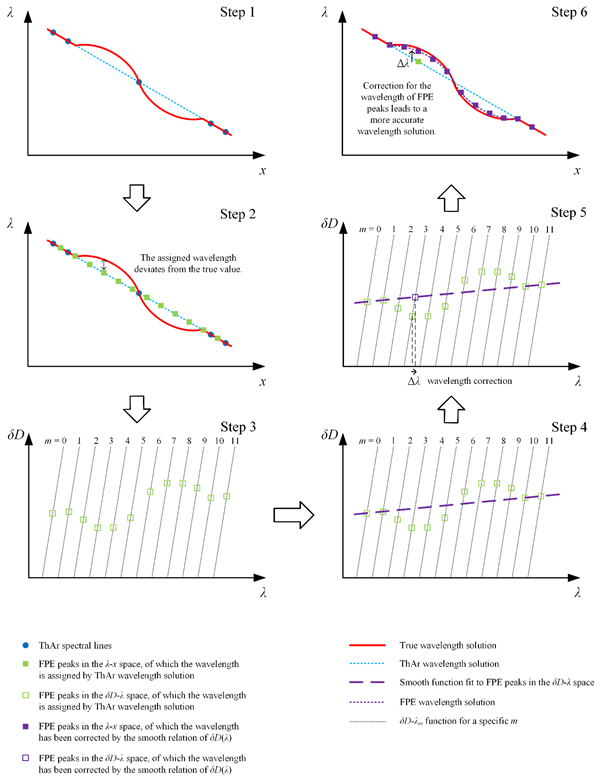
Figure 2 principle flow chart of the FPE wavelength solution 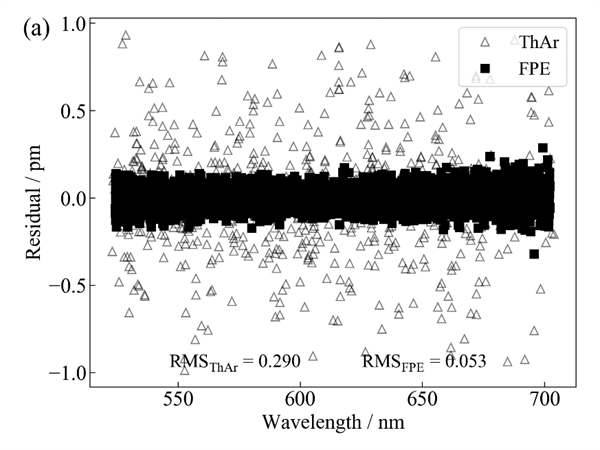
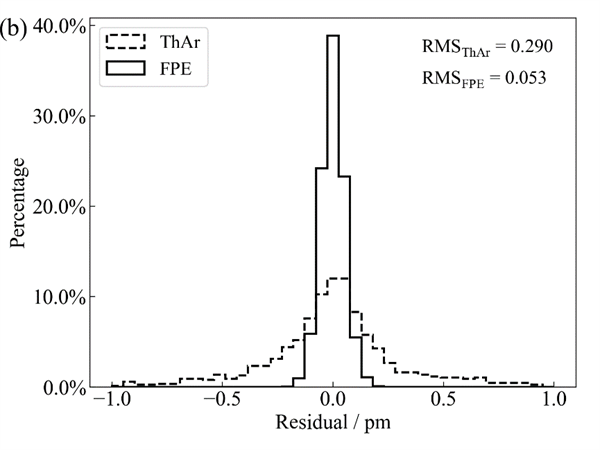
Figure 3 Comparison of the residual difference of spectral wavelength between thorium- argon lamp and FPE wavelength solution (a) residual of different wavelengths; (b) bar chart of residual distribution |